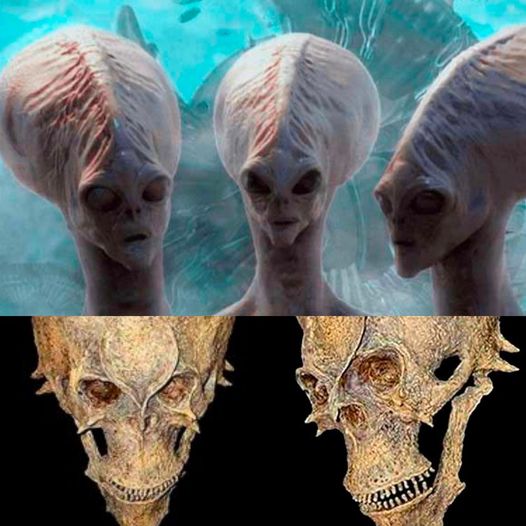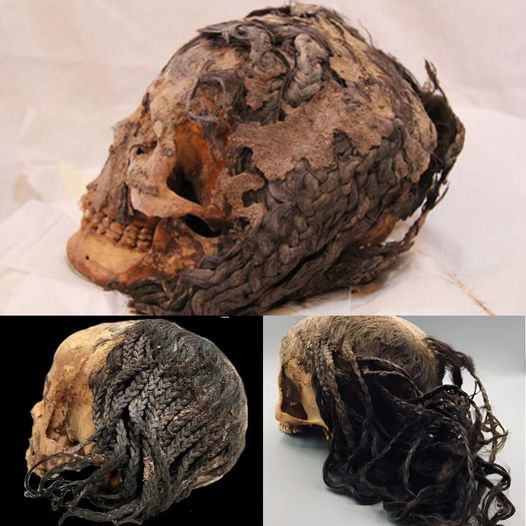In the blockbuster War of the Gods, there is a scene where Zeus shouts: "Release the Kraken!". Do Kraken monsters exist?
The mystery of the most powerful monster in the sea has been solved?
In the movie, Kraken is a giant monster with many tentacles that roars in horror and can destroy an entire city in an instant. It was like the nuclear weapon that Zeus wanted to use to teach the unruly people a lesson to remember. While the filmmakers used rich imagination and unique artistic tricks to characterize Kraken, they didn't have to start from scratch.
Kraken was first described in a manuscript about 1,000 years ago. According to Scandinavian mythology, the Kraken is so big that its body looks like several small islands. Unnoticed sailors rowed towards the "island" and the "island" opened their mouths full of sharp teeth and swallowed them.

The Kraken is described as a ferocious creature that often attacks ships at sea.
The Kraken is first mentioned in the Örvar-Oddr, a 13th-century Icelandic tale involving two sea monsters named Hafgufa and Lyngbakr.
Around that time (about 1250), another report of Kraken was recorded in a… Norwegian scientific work. This work describes the Kraken's eating habits mainly by trapping fish around by releasing food from its mouth. Others argue that the beast emits a strong and peculiar scent when it wants to feed.
Either way, the fish is supposed to be lured into the Kraken's mouth. As a result, a large number of them will be trapped. The sudden collection of fish was therefore taken as a warning sign for sailors to move their vessels out of a supposedly dangerous area quickly, as they could very well fall victim to the Kraken.
Kraken is also mentioned in the first edition of Systema Naturae (1735), a biological taxonomy by the Swedish botanist, physician, and zoologist Carolus Linnaeus. He classified the Kraken as a cephalopod, scientifically known as Microcosmus marinus. Linnaeus described the Kraken in his later work, Fauna Suecica (1746) as a unique monster believed to live in Norwegian waters. But Linnaeus himself claimed… never seen this monster.
Later, thanks to information from fishermen, the Danish historian Erik Pontoppidan went on to describe the appearance of the Kraken in his Natural History of Norway (1755.) He wrote that the beast was "round." , flat and full of different arms” and most surprising of all nature's creations of animals.
Most research scholars believe that the Kraken monster is based on either a fusion of squid or octopus species. The most common is the belief that the appearance of the beast is closest to a giant squid

Kraken is the legendary version of the real giant squid. (Photo: 3dtotal)
By the 18th century, seafarers had spread stories about the horror called Kraken - a giant tentacle monster that sank ships at sea.
Historians and scientists suggest that the legend of the Kraken is related to the giant squid, which can grow up to 18 meters in length, and is rarely seen by humans because it lives in extreme depths in the ocean. ocean bed.
The fierce battles that took place between it and the sperm whale have been described by many books as a battle between sea gods.

Kraken has a rather thick skin plus round orbs lying along its tentacles.
In the legend, it was also described that each time the Kraken appeared, it caused an entire sea to be stirred.
Traditional Scandinavian seafarers can't forget to bring well-forged swords and long hooks to deal with Krakens when they encounter them.
Swedish author Jacob Wallenberg described the Kraken in his 1781 work as being able to rise out of water. When he reaches 10-12 years old, Kraken is like a floating island, able to spray water from his fearsome nostrils and make the water ripple around for kilometers.
However, according to seafarers, all precautions against Kraken are ineffective, because Kraken has a rather thick skin plus circular spheres along its tentacles.
Not only was this skin thick as steel, but this skin also secreted mucus that made it difficult for sailors to stand on the deck, let alone use weapons.
And since then, every time they go to sea, sailors often consider praying to the gods not to let them face the Kraken as the most effective way to avoid Kraken.
In 1801 from a report by French sailors of an attack by a mysterious creature off the coast of Angola, a giant animal with large "proboscis" attacked the merchant ship of Pierre Dénys de Montfort.
This sea demon caused the ship to be badly damaged, many of the crew had never had the opportunity to return.
“From the bottom of the sea a large and deep water hole was created, and large masts suddenly surrounded our ship.
Then those hoses wrapped tightly around the side of the ship causing serious damage to the ship, and we were completely passive in that situation.”

Water monster Kraken.
Centuries ago, when the line between mythical beasts and zoological reality was still blurred, the Kraken was just one of a few giant animals (dragons, sea monsters, etc.) controversial. The Kraken is also mentioned in the first edition of the book Systema Naturae in 1735.
A taxonomy of living things, written by Swedish botanist and physician Carolus Linnaeus. He listed the Kraken as a type of cephalopod (mollusk) and gave it the scientific name.
In 1752, Scandinavian bishop Eric Ludvigsen Pontopiddan published a book entitled The Natural History of Norway, which contained a chapter on sea monsters. He describes the Kraken as "round, flat, and many tentacles".
Clues that prove Kraken is real
In the late 1800s, scientists had enough credible evidence (including the trunks of some Kraken washed up on Canadian beaches) for the existence of this giant marine animal.
By the late 1800s, scientists had enough reliable evidence (including the trunks of some Kraken washed up on Canadian beaches) for the existence of this giant marine animal.
Then, Mark McMenamin, a paleontologist from Mount Holyoke University in Massachusetts, USA, said he had discovered a number of signs that could prove the existence of the Kraken species.
While studying fossils of giant fish lizards, McMenamin found evidence of a Kraken up to 30m long. He continued his research and presented the results at the annual meeting of the American Geological Society in Minneapolis.
Gradually, many experts believe that it is not excluded that the Kraken monster is related to the giant squid.
Since then, biologists have increasingly actively studied this family of sea creatures, but they do not believe that such a large squid exists.
However, in the past 10 years, humans have collected over 300 unusually large products of giant squid when they accidentally got caught in nets or washed up on the beach.
Most giant squid carcasses weigh about 1 ton and are about 15 meters long. There are children weighing up to tens of tons and reaching lengths of more than 20m.
The above record belongs to a squid weighing nearly 25 tons, which was found not long ago in the Tasmania area.
Therefore, many scientists believe that Kraken species can exist everywhere, except for the sea around the Arctic. However, there is still no scientific basis to confirm this statement to be true.

Most likely giant squid exist.
Recently, a team of scientists from 8 different countries around the world tried to clarify about this mysterious sea creature by genetic analysis.
They collected tissue samples from 43 giant squid caught in seas from Florida, the US to South Africa and New Zealand and arranged the tissue samples into sets with mitochondrial systems containing the chemical ATP and enzymes involved in cellular metabolic activities.
Scientists discovered that the genetic diversity of giant squid is extremely low. Even the giant squid caught in the far reaches of the world differ by less than 1 in 100 DNA codes.
This shows that the giant squid's species-like genes are the most restrictive of all the marine species the scientists investigated.
Thus, it is likely that giant squid exist. However, the explanations related to the giant squid are still questionable, so the story of the Kraken sea monster still needs more thorough explanations.
In 2011, the fossil of a sea lizard showed a strange pattern that one researcher assumed was caused by an octopus like the Kraken description.
This claim was later heavily criticized, but Professor McMenamin, a paleontologist at Mount Holyoke University in Massachusetts, supported the conclusion with other findings.
Evidence is given regarding marine reptile vertebrae that have been found in Berlin - Ichthyosaur State Park in Nevada. This creature is called an ichthyosaur and lived about 200 to 250 million years ago.

Images of what are believed to be tentacles found by researchers.
The problem is that the fossilized bones suggest it was attacked by a much larger predator. This is the basis of many researchers theorizing that it is the giant octopus or squid that once dominated the seas.
The researchers estimate that the creature that defeated the ichthyosaur must have been about 30 meters long, a figure far exceeding the largest known giant octopus.
The fossil has been identified as part of a giant octopus or squid-like creature, along with many bones arranged in unusual patterns that show signs of suckers on tentacles. Besides, scattered bone fragments were also found along with the remains of the ichthyosaur.
Meanwhile, Professor McMenamin asserts that the arrangement of the bones and the location of the suction marks suggest that the ichthyosaur had drowned or had a broken neck. Looks like the monster has been moved, possibly to the Kraken's lair, where it was dumped.
Although it is not yet known whether the Kraken is just a myth or a real creature, the giant squid is still perhaps the most elusive large animal in the world, which has greatly contributed to the its mystery.






